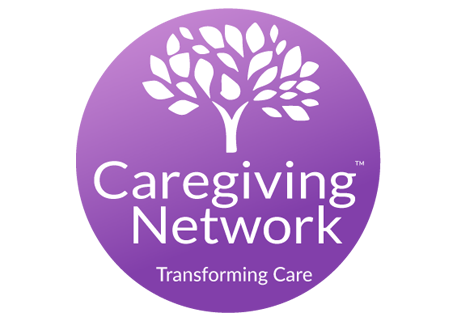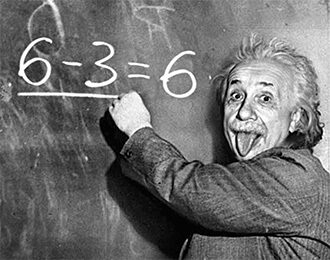Fatty Liver Disease

Cleveland Clinic – Updated October 2021
Author: Cleveland Medical Professional
Fatty liver disease is a common condition caused by the storage of extra fat in the liver. Most people have no symptoms, and it doesn’t cause serious problems for them. In some cases, though, it can lead to liver damage. The good news is you can often prevent or even reverse fatty liver disease with lifestyle changes.
OVERVIEW
What is the liver’s function?
Your liver is an essential organ with multiple life-supporting functions. The liver:
- Produces bile, which helps with digestion.
- Makes proteins for the body.
- Stores iron.
- Converts nutrients into energy.
- Creates substances that help your blood clot (stick together to heal wounds).
- Helps you resist infections by making immune factors and removing bacteria and toxins (substances that can harm your body) from your blood.
What is fatty liver disease?
Fatty liver disease (steatosis) is a common condition caused by having too much fat build up in your liver. A healthy liver contains a small amount of fat. It becomes a problem when fat reaches 5% to 10% of your liver’s weight.
Why is fatty liver disease bad?
In most cases, fatty liver disease doesn’t cause any serious problems or prevent your liver from functioning normally. But for 7% to 30% of people with the condition, fatty liver disease gets worse over time. It progresses through three stages:
- Your liver becomes inflamed (swollen), which damages its tissue. This stage is called steatohepatitis.
- Scar tissue forms where your liver is damaged. This process is called fibrosis.
- Extensive scar tissue replaces healthy tissue. At this point, you have cirrhosis of the liver.
Cirrhosis of the liver
Cirrhosis of the liver is a result of severe damage to the liver. The hard scar tissue that replaces healthy liver tissue slows down the liver’s functioning. Eventually, it can block liver function entirely. Cirrhosis can lead to liver failure and liver cancer.
What are the forms of fatty liver disease?
There are two main forms of fatty liver disease:
Alcoholic liver disease
Alcoholic fatty liver is the accumulation of fat in the liver as a result of heavy drinking. (Moderate drinking is defined as one drink a day for women and up to two drinks per day for men.) About 5% of people in the U.S. have this form of liver disease.
Nonalcoholic fatty liver disease
Nonalcoholic fatty liver disease occurs in people who aren’t heavy drinkers. The condition affects one in three adults and one in 10 children in the United States. Researchers haven’t found the exact cause of nonalcoholic fatty liver disease. Several factors, such as obesity and diabetes, can increase your risk.
SYMPTOMS AND CAUSES
Who gets fatty liver disease?
You have a greater chance of developing fatty liver disease if you:
- Are Hispanic or Asian.
- Are a postmenopausal woman (a woman whose periods have stopped).
- Have obesity with a high level of belly fat.
- Have high blood pressure, diabetes, or high cholesterol.
- Have obstructive sleep apnea (a blocked airway that causes breathing to stop and start during sleep).
What causes fatty liver disease?
Some people get fatty liver disease without having any pre-existing conditions. But these risk factors make you more likely to develop it:
- Being obese or overweight.
- Having Type 2 diabetes or insulin resistance.
- Having metabolic syndrome (insulin resistance, high blood pressure, high cholesterol and high triglyceride levels).
- Taking certain prescription medications, such as amiodarone (Cordarone®), diltiazem (Cardizem®), tamoxifen (Nolvadex®) or steroids.
What are the symptoms of fatty liver disease?
People with fatty liver disease often have no symptoms until the disease progresses to cirrhosis of the liver. If you do have symptoms, they may include:
- Abdominal pain or a feeling of fullness in the upper right side of the abdomen (belly).
- Nausea, loss of appetite or weight loss.
- Yellowish skin and whites of the eyes (jaundice).
- Swollen abdomen and legs (edema).
- Extreme tiredness or mental confusion.
- Weakness.
DIAGNOSIS AND TESTS
How is fatty liver disease diagnosed?
Because fatty liver disease often has no symptoms, your doctor may be the first one to spot it. Higher levels of liver enzymes (elevated liver enzymes) that turn up on a blood test for other conditions may raise a red flag. Elevated liver enzymes are a sign your liver is injured. To make a diagnosis, your doctor may order:
- Ultrasound or computed tomography (CT scan) to get a picture of the liver.
- Liver biopsy (tissue sample) to determine how far advanced liver disease has progressed.
- FibroScan®, a specialized ultrasound sometimes used instead of a liver biopsy to find out the amount of fat and scar tissue in the liver.
MANAGEMENT AND TREATMENT
How is fatty liver disease treated?
There’s no medication specifically for fatty liver disease. Instead, doctors focus on helping you control factors that contribute to the condition. They also recommend making lifestyle changes that can significantly improve your health. Treatment includes:
- Avoiding alcohol.
- Losing weight.
- Taking medications to control diabetes, cholesterol and triglycerides (fat in the blood).
- Taking vitamin E and thiazolidinediones (drugs used to treat diabetes such as Actos® and Avandia®) in specific instances .
PREVENTION
How can fatty liver disease be prevented?
The best way to avoid fatty liver disease is to do the things that maintain overall health:
- Stay at a healthy weight. If you’re overweight or obese, lose weight gradually.
- Exercise regularly.
- Limit your alcohol consumption.
- Take medications as prescribed.
OUTLOOK / PROGNOSIS
Can fatty liver disease be reversed?
The liver has an amazing ability to repair itself. If you avoid alcohol or lose weight, it’s possible to reduce liver fat and inflammation and reverse early liver damage.
Will fatty liver disease kill you?
Fatty liver disease doesn’t cause major problems for most people. However, it can turn into a more serious problem if it progresses into cirrhosis of the liver. Untreated cirrhosis of the liver eventually leads to liver failure or liver cancer. Your liver is an organ you can’t live without.
LIVING WITH
What is a good fatty liver diet?
Follow a balanced diet to lose weight slowly but steadily. Rapid weight loss can actually make fatty liver disease worse. Doctors often recommend the Mediterranean diet, which is high in vegetables, fruits and good fats. Ask your doctor or nutritionist for advice on healthy weight loss techniques.
What questions should I ask my doctor?
- Am I taking any medications that could contribute to fatty liver disease?
- How much damage does my liver have?
- How long will it take to reverse the liver damage?
- What is a healthy weight for me?
- Can I talk to a nutritionist or go to classes to learn about healthy eating?
- How can I get treatment for alcohol use disorder?
A note from Cleveland Clinic
Consider fatty liver disease an early warning sign to help you avoid a fatal liver condition, like cirrhosis or liver cancer. Even if you don’t have symptoms or any liver function problems at this point, it’s still important to take steps to stop or reverse fatty liver disease.






